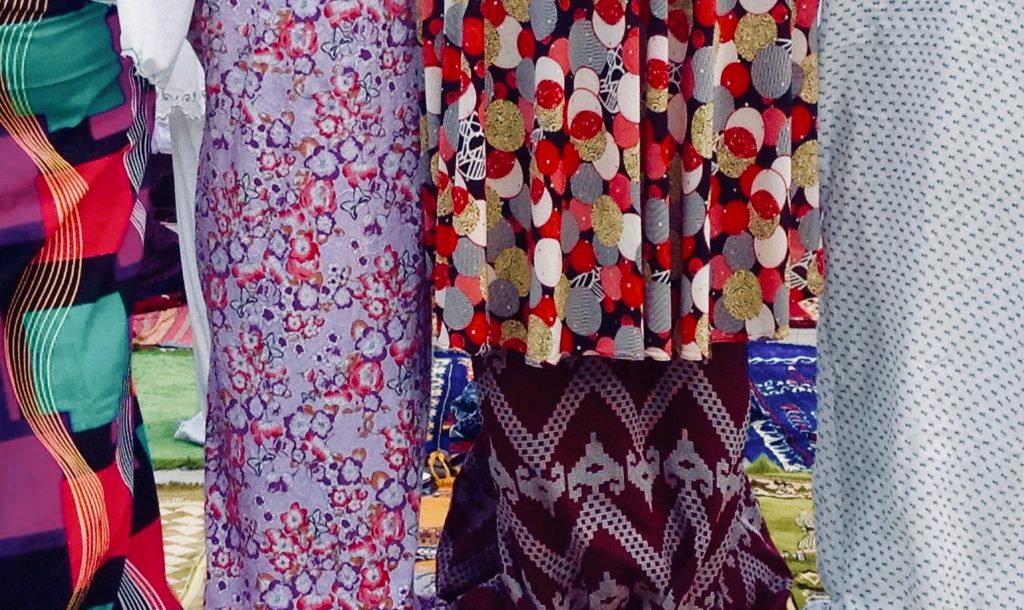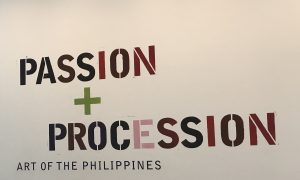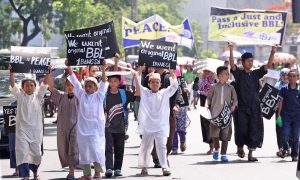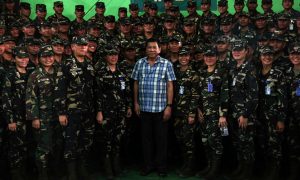In the early hours of May 31, 2018, the Philippine Senate voted 24-0 in favor of a version of the Bangsamoro Basic Law (BBL) that contains significant amendments from the one proposed by the expanded Bangsamoro Transition Commission (BTC). The BTC is composed of representatives from the government, Moro Islamic Liberation Front (MILF), Moro National Liberation Front (MNLF), settlers, lumads [the collective term for various distinct non-Islamised indigenous peoples in Mindanao], and other sectors. It was formed in 2013 and expanded in 2016.
The BBL is supposed to address the historical injustices committed against the Bangsamoro people and recognise their right to self-determination. It is envisioned to be a political solution to the decades-long conflict in the southern Philippines.
On one hand, the Senate vote has been celebrated as a victory for the Bangsamoro struggle. On the other hand, critics, including MILF chair Al Haj Murad Ebrahim, claimed that the Senate-approved BBL is a diluted version of the BTC-BBL. The BTC-BBL is compliant with the Comprehensive Agreement on the Bangsamoro, which the government and MILF peace panels signed in 2014. It has also been subjected to several years of consultations with various stakeholders in Mindanao. It has broad support, especially among Moros, although there are lumad groups who contest some of its provisions and push for the full inclusion of indigenous peoples’ rights in the BBL.
A few days before the Senate vote, nine members of the MILF’s armed wing, the Bangsamoro Islamic Armed Forces (BIAF), were killed by police and soldiers in North Cotabato. Authorities claim this was a legitimate anti-drug operation. The MILF belied this. They argued that it was a massacre because the BIAF members were already disarmed by the government forces before they were killed.
Moros on social media decried these recent incidents as another indication of their marginalised position in Philippine society.
As these events and the reactions to it unfolded, and as the Senate and the House debate the BBL and vote on the final version during their Bicameral conference this July (Editor’s note: this article was written before the conclusion of the Bicameral conference), I look back to the Mamasapano clash of 2015 to demonstrate how this event and the memories of violence against Muslims that it provoked among my Maguindanaon interlocutors (re)surfaced long-standing tensions around Muslim belonging to, and exclusion from, the Philippine body politic and imagination.
I ask how, in the context of the aftermath of the Mamasapano clash, these memories serve as an expression of Muslim resistance to exclusionary practices and discourses in the country, and how they are part of my interlocutors’ assertion of their distinct identity and sense of belonging to the Bangsamoro imagined community.
In answering these questions, I draw on my long-term ethnographic research between 2012 to 2018 among Maguindanaons in the Cotabato region who have a stake and participate in the MILF’s five decades of struggle for the Bangsamoro right to self-determination and who also refer to themselves as Muslim, Moro, and Bangsamoro.
Shifting the discourse on othering
Civil society organisations recognise that misunderstandings between Christians and Muslims are a vital component of the long-running conflict in the south. They thus regularly conduct “culture of peace” activities, aimed at fostering understanding among the “tri-people” of Mindanao: Muslims, Christians, and lumads. This has been accompanied by the MILF and affiliated and non-affiliated organisations’ attempts to shift the discourse from an “us/them” to a “we,” referring to Christians, Muslims, and lumads alike as all “victims of history”. This is to promote inter-ethnic and inter-faith solidarity in a region where communal and state-perpetrated violence in the late 1960s and during Marcos’ martial law years ruptured social relationships.
The violence of these periods left a legacy of mistrust, betrayal, fear, and insecurity, largely because of the absence of justice and people’s continued experience with violent conflicts in the present. Shifting the othering discourse is also aimed at generating support for the peace process, which the MILF has been engaged in since the 1990s.
Despite these exhortations of unity, there remained a strong sentiment among my interlocutors that they are left out of the Philippine nation. This becomes particularly evident during certain critical events such as the Mamasapano clash, which created such public outrage among non-Muslim Filipinos that some peace process observers believe it contributed to scuttling the peace talks between the MILF and the government. The peace talks were supposed to have been finalised in 2015.
The Mamasapano clash
On 25 January 2015, the Philippine nation woke up to news about the deaths of 44 members of the Special Armed Forces (SAF), a government elite police unit, in the town of Mamasapano, in the southern Philippines.
In the following days, gruesome and detailed descriptions of the death of the elite policemen in the hands of Muslims dominated news reports. Mainstream media and some government officials called their deaths a “massacre” and painted a picture of the SAF as the “country’s heroes” who entered Mamasapano to serve an arrest warrant to a Malaysian on the United States terrorist list and his associate. Somewhere along the way, something went wrong with the operation and the policemen engaged armed men in a firefight in two different areas, one of which, Tukanalipao, is a government-recognised camp of the MILF. After eleven hours of battle, 44 policemen were dead.
This tragic event warrants condemnation. But the way it was condemned, and what was omitted in the process of condemnation, deserve to be critically examined.
People were quick to point fingers and accused the MILF of being traitors in the peace process, despite the absence of independent investigations and evidence that there were several armed groups and individuals involved.
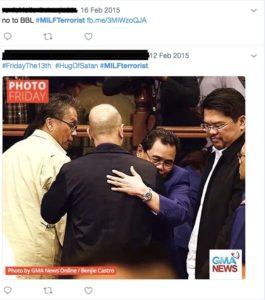
Private citizens posted Tweets with hashtags and statements such as #HugofSatan, #MILFterrorist, and “no to BBL” as they shared a picture of MILF peace panel chair Mohaqer Iqbal with government officials, during the Senate hearing on the Mamasapano clash.
Politicians, some of whom were about to embark on their re-election campaigns, took centre stage, condemned the “massacre” of the policemen, and proceeded to conduct a Senate inquiry that grilled top leaders of the MILF with repeated accusations of “overkill,” “brutality,” and terrorist links.
Two months afterwards, the Senate came out with its report that, among others, labelled the clash a “massacre.” This is notwithstanding the MILF and some government officials’ insistence that it was a “misencounter,” a euphemism for an accidental armed encounter.
Exclusionary discourse
These representations of Muslims captured the imagination of a nation where Muslims have been stereotyped as violent, as terrorists, as untrustworthy and prone to run amok, and where there has been hard-line position on keeping the peace in certain parts of Mindanao. The portrayals appealed to pre-existing constructs and scenarios about the Muslim Other in non-Muslims’ minds, scenarios which people connected to moral orders of good versus evil, terrorists versus heroes, and traitors versus nationalists. Non-Muslim Filipinos’ readings of the Mamasapano clash were informed by Spanish and American colonial-era imageries of Muslims as a violent people, by the communal violence of the late 1960s and 1970s when religious identity became a focal point for a violent form of othering, the skewed portrayal, and even erasure, of Muslims in Philippine history textbooks, and by the contemporary global discourse on the “Muslim terrorist”.
These contributed to making Muslims’ reported brutality easily acceptable as fact, despite the absence of credible investigations in the immediate aftermath of the clash. The old saying “the only good Moro is a dead one” succinctly captures the combined prejudice, fear, and ignorance of the history of Muslims in the country. Indeed, these images and their political, economic, and social consequences are so important that, according to Mohd. Musib Buat in a 2007 Autonomy and Peace Review article, the deep-seated biases and prejudice against Muslims have been “one of the main causes why the Bangsamoro people wanted to set up their own country and do not wish to be integrated and assimilated into the Filipino national community”. Even though the MILF struggle is no longer separatism, such biases against Muslims continue to frame the reading of current events like the Mamasapano clash.
Following the lead of mainstream media’s reporting on the clash, non-Muslim Filipino social media users posted indignant and angry comments on social media, news reports, and opinion editorials regarding the “massacre.” The depiction of the death of the 44 SAF as a massacre struck a chord among these social media users who called for justice for the policemen and for revenge, with some calling for war against the MILF, and others saying that Muslims should leave the country, further fuelling a hate-filled and pro-war discourse engaged in by some politicians and journalists.
Largely absent from these Filipinos’ rhetoric was a recognition of the deaths of 18 MILF fighters and at least 7 Muslim civilians, including a 5-year old girl hit by a stray bullet and 5 men allegedly killed by the SAF in a mosque. These deaths did not receive as much media, politician, and public attention as the death of the policemen. Following Judith Butler, this is an “omission,” a “refusal of discourse,” that renders Muslim lives as not recognisable as life, and therefore not grievable.
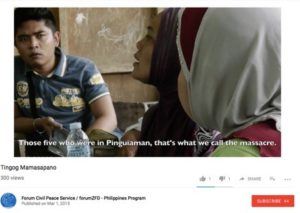
Women in Mamasapano recount how five men sleeping in a mosque in Pinguiaman were killed by the SAF. The interview was conducted by forumZFD, Oxfam, and other organizations during a “listening mission” in February 2015. The documentary Tingog Mamasapano is available on the Youtube channel of Forum Civil Peace Service/forumZFD – Philippines Program.
Muslims push back
Muslims were equally indignant but less audible and less visible; as is often the case, they were not given the national and mainstream media platforms accorded to national politicians and the survivors of the clash. They took offence at the use of the words “terrorist” and “massacre” to describe Muslims and the MILF and the deaths of the policemen, and the almost complete silence concerning the deaths of Muslim civilians.
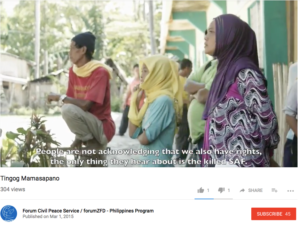
A woman in Mamasapano lamenting the silence regarding their rights, the Muslim casualties, and the loss of their livelihood in the aftermath of the clash.
As the national and mainstream media continued to attach the word “massacre” solely to the fate of the SAF who entered the village, a male MILF interlocutor told me in an email a few days after the clash, “Do you believe that what happened in Mamasapano can be called a massacre despite their [SAF] entry into Bangsamoro territory, fully armed and with the intent of going to war? Who has plans of committing a massacre? The dayo (outsider) or those who own the land, living peacefully, and unprepared for what happened?”
Meanwhile, the immediate and only reaction of a Moro woman to my question about what she thought of the Mamasapano clash was: “It was not a massacre. They [SAF] were armed, not civilians. They were the ones who entered the area with weapons. Massacres are only for civilians.” She, an MILF member, experienced Marcos’ martial law and the subsequent wars in a rural part of the Cotabato region.
It is this image of innocent and unarmed civilian victims that also provoked some of my interlocutors to vehemently deny that they are terrorists.
In many of my conversations in the Cotabato region during my research, people have insisted to me that they are not the ones killing women, children, and the elderly, and laying siege to communities. As a male MILF development worker told me in January 2013, referring to the label “terrorist”: “That’s what’s painful. They [Muslims] are accused of being terrorists in their own lands where their ancestors lived. Meanwhile soldiers who are not from here become heroes.”
To counter the dominant portrayal of the clash, my Moro contacts on Facebook posted articles, videos, and comments about massacres committed against Muslims in the past. They urged people to remember these as well. They mentioned, among others, the 1906 Bud Dajo massacre of 800 to 900 Tausug men, women, and children in Sulu by American soldiers, the 1968 Jabidah massacre of Muslim military recruits in the island of Corregidor, the 1971 Manili massacre of 70 to 80 men, women, and children inside a mosque, the 1974 Malisbong/Kulong-Kulong massacre of an estimated 1,500 men—again inside a mosque—and the massacre of 6 members of the Mandi family, including children, in 2009.
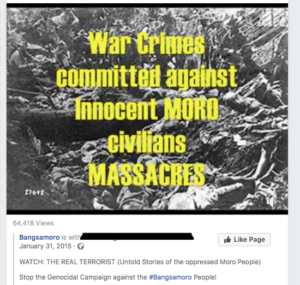
One of the Facebook posts shared by some of my Moro contacts in the aftermath of the Mamasapano clash. The video lists massacres committed against Moros in the Philippines.
However, these social media posts were often limited to friends or fellow Moros and supporters. They were largely ignored by mainstream media.
Massacre, memory-making, and belonging
The labelling of the Mamasapano clash as a “massacre” provoked such reactions and assertions from my interlocutors because massacres run deep in the history of Muslim experiences of violence in the Philippines. Massacres, according to my interlocutors, is a form of violence that targets innocent and unarmed civilians. This is the reason why there was a proliferation of protests among Moros towards the labelling of the deaths of the SAF—who were fully armed, US-trained, and with 300 backup forces along the highway—as a massacre. They did not deem the policemen innocent nor unarmed.
I found in my ethnographic research that incidents of massacres, and memories and imaginings of it, occupy a central place in the liberation fronts’ narratives of the Bangsamoro as an oppressed people, in my interlocutors’ experiences with violence, their imaginings of the threat of violence and brutal potential of the government, and in their identity formation.
This centrality of massacre in people’s lives and in the Bangsamoro imaginary can be particularly seen in the liberation fronts’ and its members’ will to remember massacres. As I discuss in my broader work, this will to remember constitutes deliberate acts of remembering that have framed the memories of massacres in a moral and political way to prepare and strengthen Moros to not let the past happen again.
This collective memory of massacres has become a significant part of the Bangsamoro shared heritage and the imaginary of an oppressed but unconquered and valiant people that is contained and propagated in Moro liberation fronts’ memory-making practices and re-narrativisation of history. These narratives forge a sense of peoplehood that help constitute the Bangsamoro imagined community, identity, and struggle for the right to self-determination.
Stories of massacres that Muslims endured also often provoke fellow-feelings of empathy, pity, compassion, and sympathy among Maguindanaons I had gotten to know. In turn, the narratives, their moral and political meanings, and the emotionality of remembering foster a sense of collective suffering and collective responsibility for other members of the Bangsamoro imagined community. This is particularly so because massacre is not of the past. It continues to be part of people’s lived reality and a haunting reminder of what could potentially be.
This possibility, and the lack of justice, are some of the reasons why my interlocutors reacted with such deep hurt to the use of the word “massacre” to describe the deaths of the SAF, as though it was not only their word but their experience, part of their identity, that was being taken from them. Asserting that they too have been massacred was their way to push back against exclusionary narratives, contest the dominant discourse on the clash, and express their sense of belonging to the Bangsamoro imagined community.
Hashtag politics of belonging
The question of who belongs to the Philippine nation could also be seen in the hashtag #Filipinolivesmatter that were attached to indignant posts regarding the deaths of the 44 SAF.
This hashtag, which started trending on social media, is a form of virtual solidarity that allows a post to link to other posts with similar hashtags and forges a “shared political temporality” for those who have similar political sentiments.
But in the context of the Mamasapano clash and the history of oppression, discrimination, and social, political, and economic marginalisation and exclusion of Muslims in the Philippines, #Filipinolivesmatter also served to demarcate those who belong to the category “Filipino” and those who do not, and consequently, whose lives matter and whose lives are unworthy of being mourned. That is, instead of making Muslims feel that their lives also mattered, that they are also Filipinos, the hashtag #Filipinolivesmatter othered them.
This was particularly the case because the Philippine nation mourned the dead policemen, but not the dead Muslim civilians and MILF fighters, nor the many others killed in previous massacres. There was thus pain in the statement of a Moro university student who, in our email conversation about the clash in February 2015, wrote, “We are all Filipinos. We are not seceding from the Philippines. What is painful for them is also painful for us. But we also know that since [Marcos’] martial law, our rights have never been equal because the system in the Philippines is rotten…To those who are calling for justice, I hope they also call for justice for the Muslim victims of massacres. Because they were the ones who died without any real fighting chance.”
In response to the boundary-enforcing and exclusionary social media discourse, some Moros began using the hashtag #IAMABangsaMoro. This invokes the trope of the Bangsamoro as an oppressed but unconquered and valiant people, differentiating themselves from Filipinos who they see as colonised, and re-signifying the previously pejorative term “Moro” into a positive referent for freedom fighters. These are narratives propagated by the liberation movements since the 1970s. This time, however, these are also expressed in social media, such as this post by a young male Moro professional who asserted in the aftermath of the Mamasapano clash on why he prefers the name Bangsamoro:
Why I prefer the name Bangsamoro?…Despite allegations of being a misnomer, and the biases with it, there is no other name that genuinely reflects my cultural and social identity which defy imperial colonial tone… The Spaniards in the 15th century used it to collectively refer to the groups of natives of this land that are Muslims and have a strong government, education and socio-economic system, and they weren’t wrong. The name Moro was feared because it defied the super power Western countries at those times!…Being a Bangsamoro means being a dignified woman and man opposing tyranny and oppression, surrenders in the name of the Almighty but never in the hypocrite and unjust demands of the conquestadores. And so I call on my fellow natives of this land to understand, appreciate and accept our cultural heritage. For after all, the Bangsamoro fought for the honour and dignity of this land and sacrificed their lives to attain independence and freedom. #IAMABangsaMoro.
Belonging to the Bangsamoro
Belonging, according to Nira Yula Davis, “is about emotional attachment, about feeling ‘at home’ and, as Michael Ignatieff points out, about feeling ‘safe.’” It is performative and is constructed along three analytical levels: “[the first is ] social locations; the second relates to individuals’ identifications and emotional attachments to various collectivities and groupings; the third relates to ethical and political value systems with which people judge their own and others’ belonging/s.” It is the contestations over the latter and the ways in which social locations, including political and historical positionalities, and narratives of identities are utilised in these contestations that belonging becomes political. This involves the various ways in which boundaries between “us” and “them” are enacted. But, as Davis reminds us, the politics of belonging is not just about how these boundaries are drawn, reproduced, and maintained by hegemonic powers; it is also about how these boundaries are contested and challenged.
The Mamasapano clash and the dominant discourse surrounding it served to exclude Muslims, Moros, or Bangsamoro from the Philippine body politic in a context where they have been historically marginalized and discriminated against, as boundaries were drawn to demarcate who belongs, whose lives matter and are worthy of being grieved, and whose lives are unworthy of attention and being mourned, who are dispensable, considered as a threat and a target of elimination. (We have of course seen a similar process happen during other critical events in the country and elsewhere in the world involving Muslims.)
At the same time, the memories that the label “massacre” provoked among my interlocutors, their assertions of these memories and their reading of history not only framed their reaction to the dominant discourse on the clash, but also served to contest exclusionary narratives. In the process, they reinforced their sense of belonging to their collectivity, the Bangsamoro imagined community, which, despite their criticisms of this imagined community’s inequalities, uncertainties, and conflicts, they see as different in fundamental ways, to the Philippine nation.
 Facebook
Facebook  Twitter
Twitter  Soundcloud
Soundcloud  Youtube
Youtube  Rss
Rss 